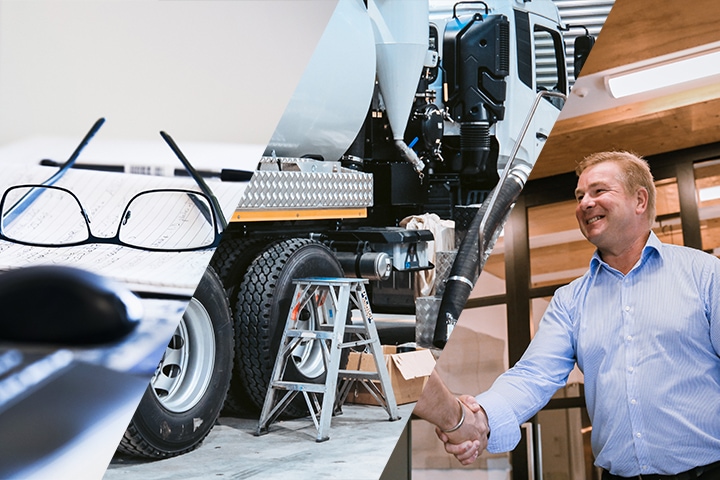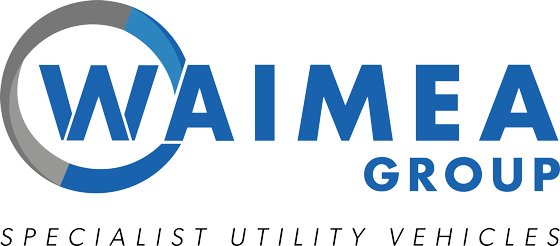Lease, Hire or Purchase – What Is Right for Me?

Is it better to buy it with my own money or use other people’s money to lease it?
The answer may surprise you but let’s explore why the traditional ownership model may not necessarily be the right one for you and is certainly no longer the only option when it comes to upgrading and investing in specialist vacuum equipment.
The purchase of a vacuum or hydro-excavation truck can be a thought-provoking time for a business owner looking for confidence to make the investment or a fleet manager making recommendations to a board. Invariably, the commitment is a significant capital investment, has a long term ‘pay-back’ model and in today’s business environment, we rarely have the luxury of assurance on long term stability or continuity.
So, if there are alternative ownership methods that…
-
Maximise cashflow
-
Minimize risk
-
Create flexibility
-
Open new opportunities
…then it’s probably worth considering, right?
Before we look at the features and benefits of alternative ownership methods, we should clarify the primary options open to you when investing in vacuum trucks or hydro-excavation equipment, these being:
- Outright purchase – making an acquisition in full with one payment
- Hire – Secure equipment services typically over a shorter term
- Lease – typically longer-term use of equipment with fixed costs and term
- Hire purchase – essentially using credit to acquire, leading to outright ownership
You could hardly disagree with the person who said “I invest my money into things that appreciate and use other people’s money for things that depreciate’’ as a wise allocation of available capital!
Many companies do not see the benefit in tying up capital in depreciating assets such as trucks and vehicles. There has been a shift from looking at ‘lowest cost over life’ to considering for the new norm of flexibility to deal with change, ability to grow and scale as opportunities present themselves and removing risk by fixing operating costs. None of these options are available to someone who commits to the long-term investment in outright purchase / ownership.
Instead, the emphasis is now about ‘return on investment’ (ROI). When leasing, you don’t ever pay off the full value of a vehicle. You only pay for the time you are using it, and look at what it can generate for you as revenue and profit in that same period. To demonstrate the point, let’s look at two vacuum operators who both have made investments on two different ownership methods and analyse their ROI.
Joe has:
- A maximum budget of $350,000
- Access to funding at 5.5% and,
- Opts to buy outright, paying off the truck over 10 years
The money is immediately costing him 5.5% and the asset he has purchased is immediately depreciating. That said, it’s a fit for purpose unit that is available for his line of work and he is happy with revenue generated in year one of $400,000 on which he realises a $50,000 profit. Years two, three and four are similar. However, from years five to 10 he hits significant R&M bills as the truck becomes tired, it is off the road for repairs and his service to customers suffers as a result. Over ten years the 350K investment generates an average profit per year of $40,000 which is an 11.4% return on investment.
Mike is in the same line of business but has a different idea. He has:
- $250,000 to invest. (He knows this isn’t enough to even purchase the equipment)
However, Mike has cottoned on to the lease model and knows that he doesn’t need to draw down on his capital at all. He signs up on a 60–month lease agreement and because he isn’t restricted by his own funds, he is able to up-spec the truck and obtain an asset that is actually worth $400,000. This gives him ability to pump faster and also tow trailers with a more powerful truck.
He invests $50,000 in starting his business and now is able to work more effectively and move more volume than Joe. Over five years this performances generates 20% more revenue per annum and 30% more profitability at an average of $52,000 per annum.
Additionally, at 60–months and the lease expiring, Mike hands back the truck and gets a brand new one meaning his earning potential doesn’t drop as the truck enters a wear and tear stage and his customer service remains unchanged. The consistent 52K profit per year on the original $50K invested is a massive 104% return on investment!
There was no difference in their business operation but the ownership model gives ten-fold better ROI. Mike has a happier customer base (consistent service) and as the truck was fully maintained, he focused on his customers instead of putting time into truck servicing and maintenance.
What we did not tell you is that at 3 years in, both operators had the opportunity to pick up additional work. Joe declined because he just did not have access to additional funds and couldn’t take the risk of purchasing a new unit repayable over 10 years with visibility of only 24 months work. Mike, however, quickly secured another truck on a short term 24 month hire and this gave him the opportunity to service the customer, grow his business, increasing his profits. This was all whilst not fixing his overhead beyond the contract and grow his ROI exponentially considering he didn’t make any further capital investment.
You get the gist: Cost over life is less important than your ability to earn today, generate a higher return on invested funds whilst maintaining flexibility to adapt to changes in the business world and life in general.
When considering lease and hire, the below key features and related benefits will be of interest:
FEATURE: Cash outlay/freeing up capital
BENEFIT: Whether being funded from cash reserves or financing through a loan, negating the need for upfront cash investment ensures you maximize liquidity and does not reduce your borrowing capability which could be used for other business investments or unforeseen business events.
—
FEATURE: Fixing costs
BENEFIT: A fully maintained hire or lease includes all repair and maintenance costs, testing, certification, depreciation and legal compliance. This means you have a fixed cost and removes the risk of costs arising during the asset ownership.
—
FEATURE: Specification & Continuity
BENEFIT: A lease or hire agreement means you can specify the right equipment for your work without ‘cutting corners’ on spec if your budget doesn’t allow in an outright purchase scenario. You can rest assured that the equipment will be reliable and distraction of maintenance and servicing is no longer your problem.
—
FEATURE: Flexibility
BENEFIT: A lease contract can be negotiated for any period from 12 months to 7 years. This means you can adapt to the needs of the business through increasing or decreasing the number of units you operate ensuring your costs fluctuate with workload or upgrading equipment as business needs change.
—
FEATURE: Depreciation & Residual Value
BENEFIT: A fixed asset as ‘owned’ by an organization will be depreciating and tying up liquidity with no guarantee on its future re-sale value with external factors influencing its market value. A hire contract includes depreciation costs and removes the risk over future re-sale values.
—
FEATURE: 100% Tax Deductible
BENEFIT: Lease costs are 100% tax deductible reducing your tax bill each year. Additionally, a lease contract does not need to feature on your balance sheet therefore improving your operating ratios.
In conclusion…
Ultimately every situation has unique drivers however its undeniable that outright ownership is inflexible. It not only ties up capital but leaves all risk of change, utilization, maintenance, and future values with the owner. Conversely, hire or leasing is flexible, generates an exponential ROI, reduces risk and maximises cashflow.
Simply put, ‘can I afford to buy the asset’ or ‘can I afford not to lease it’?

